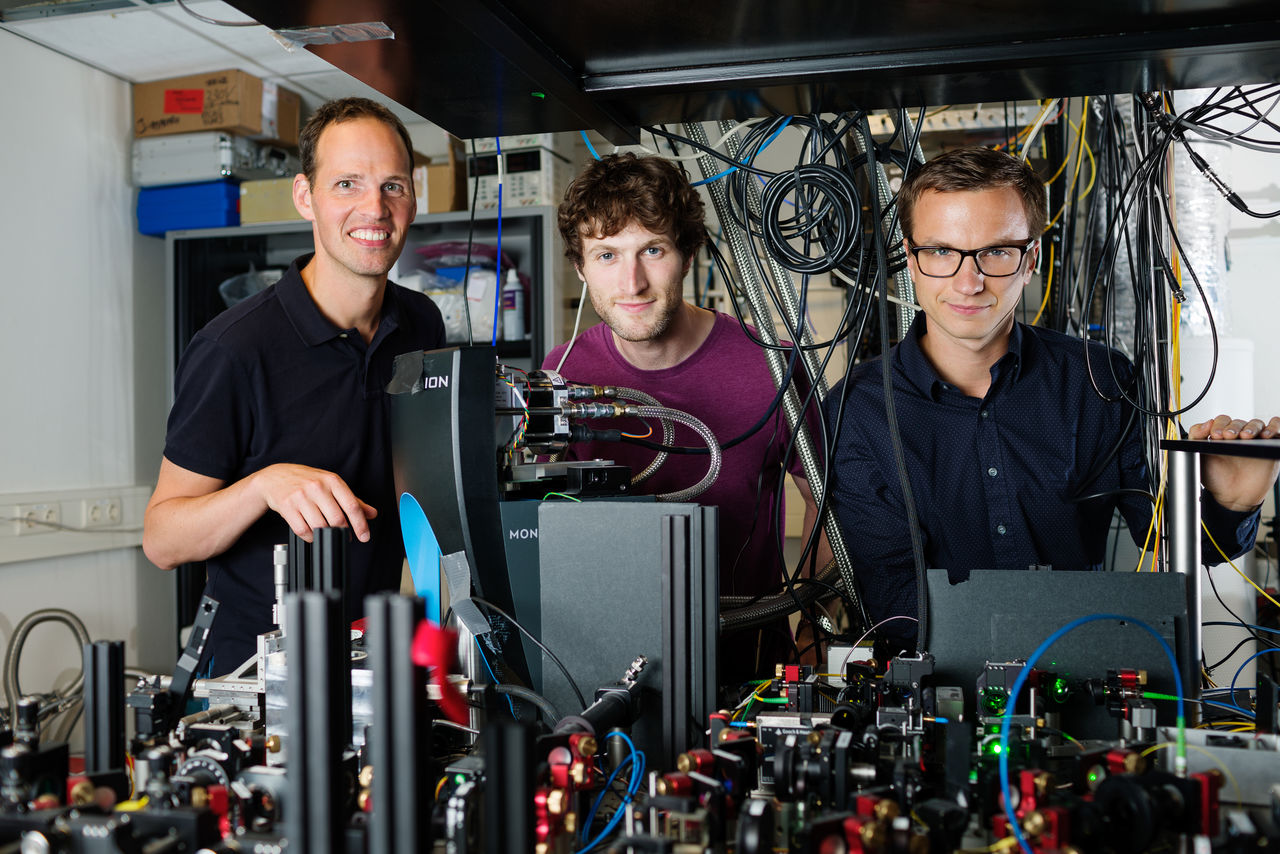Delft researchers at QuTech generated quantum entanglement between two quantum chips faster than the entanglement was lost. This means that a major hurdle in developing a useful quantum network has been cleared.
Entanglement – once referred to by Einstein as “spooky action” – forms the link that will provide a future quantum internet with its power and fundamental security. By exploiting the power of quantum entanglement, it is theoretically possible to build a quantum internet that cannot be eavesdropped on.
However, in order to realize this, you have to be able to create entanglement reliably, ‘on demand’, and maintain it long enough to pass the entangled information to the next node. So far, this has been beyond the capabilities of quantum experiments.
But now, scientists at QuTech in Delft, from the group of Ronald Hanson, have been able to generate entanglement experimentally over a distance of 2 m in a fraction of a second, ‘on demand’, and subsequently maintain this entanglement long enough to enable further entanglement – in theory – to a third node.
“These results demonstrate a key building block for extended quantum networks and open the door to entanglement distribution across multiple remote nodes,” the researchers wrote in their article published in Nature on June 14. “The challenge is now to be the first to create a network of multiple entangled nodes: the first version of a quantum internet,” Hanson adds. “We still have to develop a network with three nodes. Our experiments (published in Nature) have demonstrated that this is achievable.”
In 2015, Ronald Hanson’s research group became world news: they were the first to generate long-lived quantum entanglement over a distance (1.3 km), allowing them to provide full experimental proof of quantum entanglement for the first time. This experiment is the basis of their current approach to developing a quantum internet: distant single electrons on diamond chips are entangled using photons as mediators.
‘This is a thousand times faster than with the old method’
However, this experiment has so far not had the necessary performance to create a real quantum network. Hanson explained, “In 2015 we managed to establish a connection once an hour, while the connection only remained active for a fraction of a second. It was impossible to add a third node, let alone multiple nodes, to the network.”
The scientists have now made multiple improvements to the experiment. First of all, they demonstrated a new entanglement method. This allows for the generation of entanglement 40 times a second between electrons at a distance of 2 m.
Peter Humphreys, one author of the paper, emphasised, “This is a thousand times faster than with the old method. In combination with a smart way of protecting the quantum link from external noise, the experiment has now surpassed a crucial threshold: for the first time, entanglement can be created faster than it is lost.”
In 2020, the researchers want to connect four cities in the Netherlands via quantum entanglement.
Do you have a question or comment about this article?
tomas.vandijk@tudelft.nl


Comments are closed.